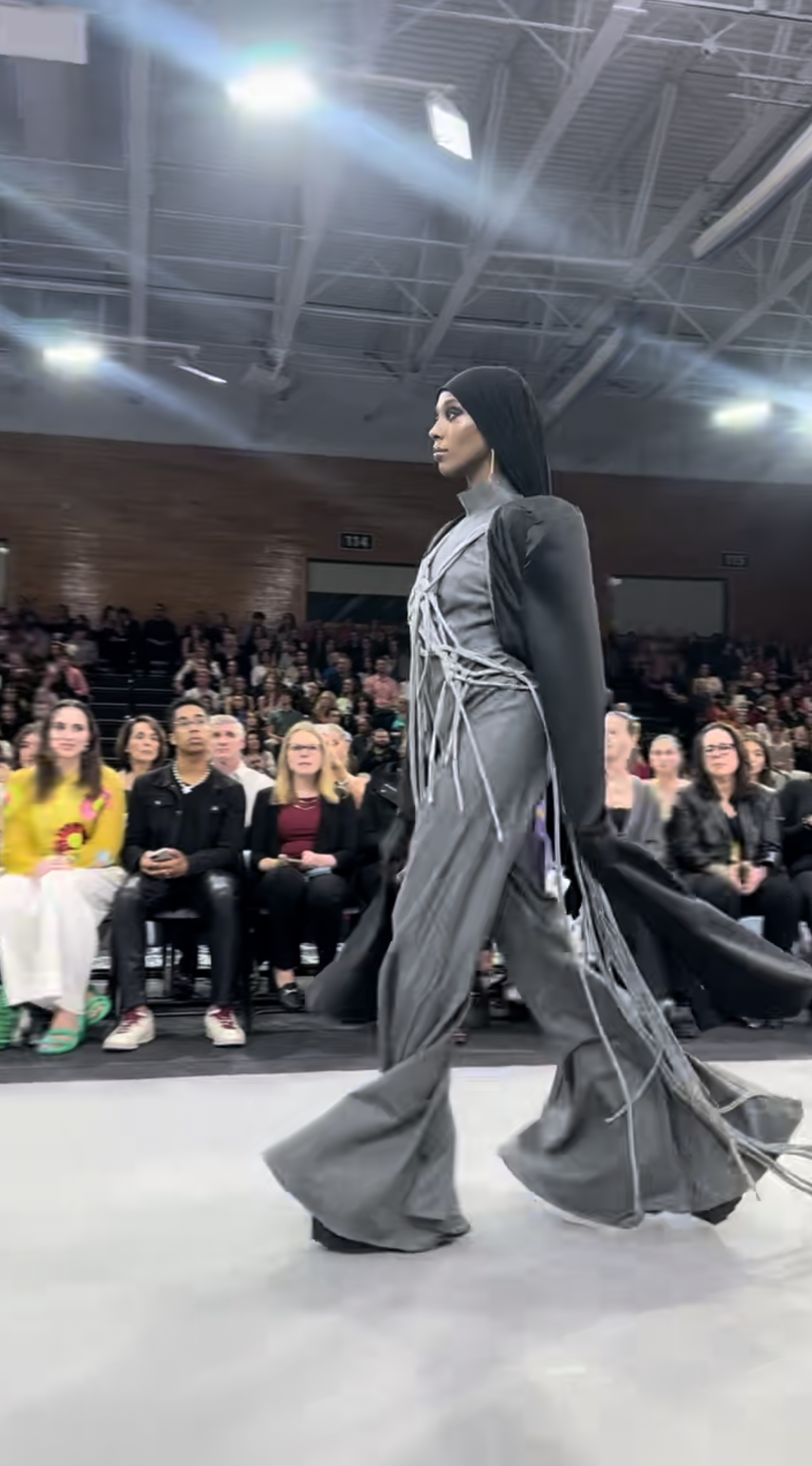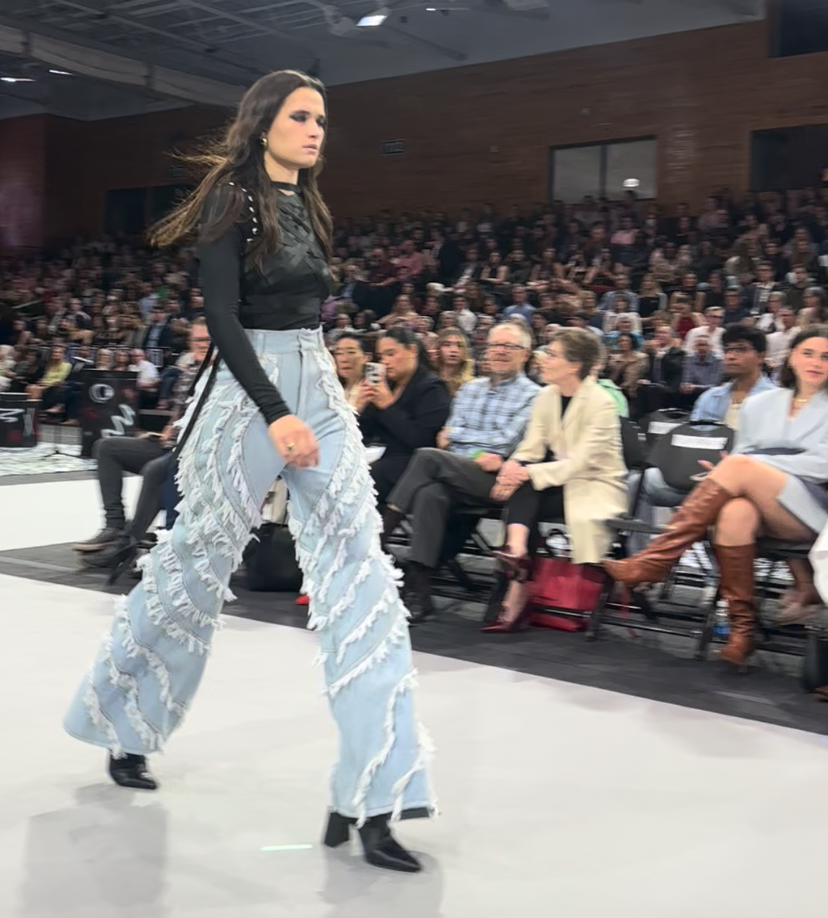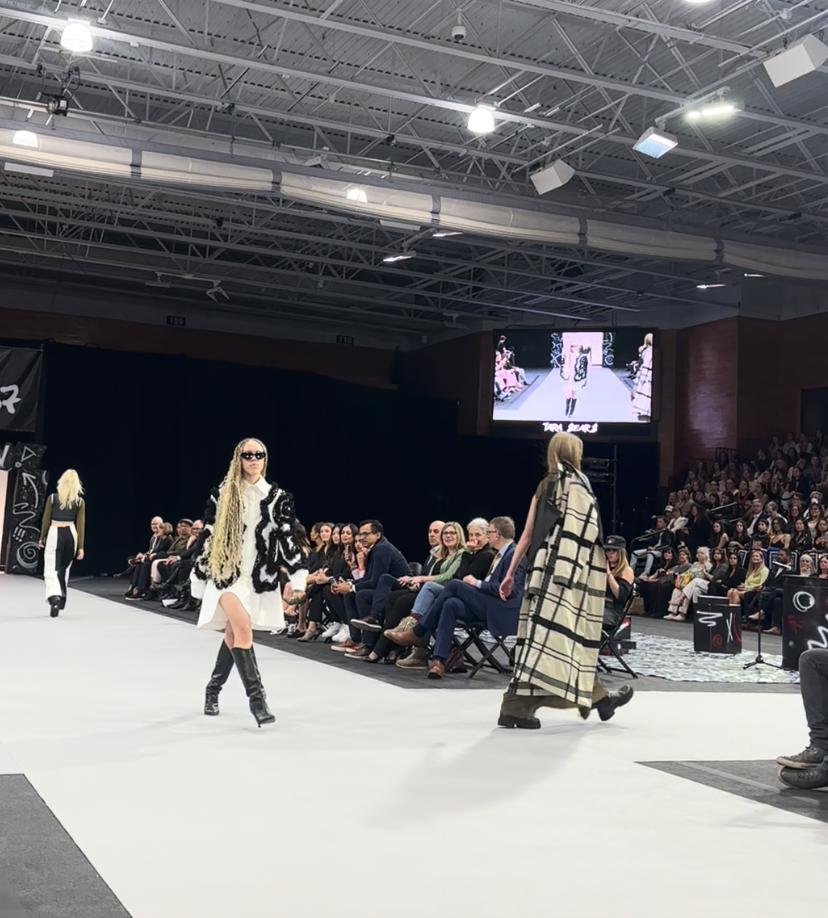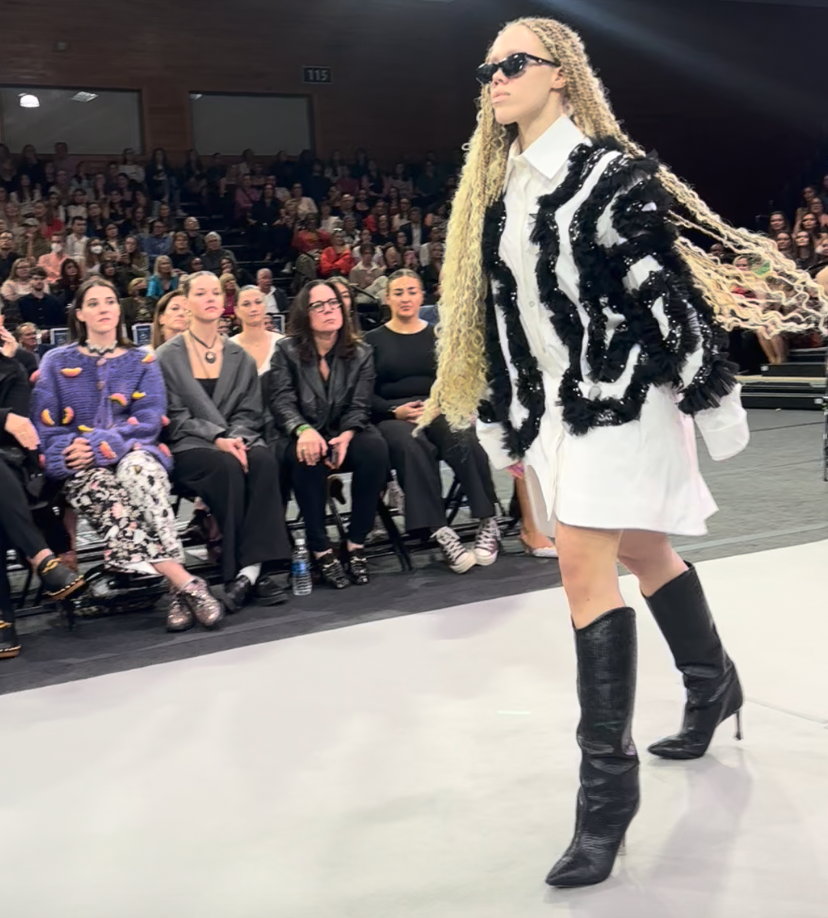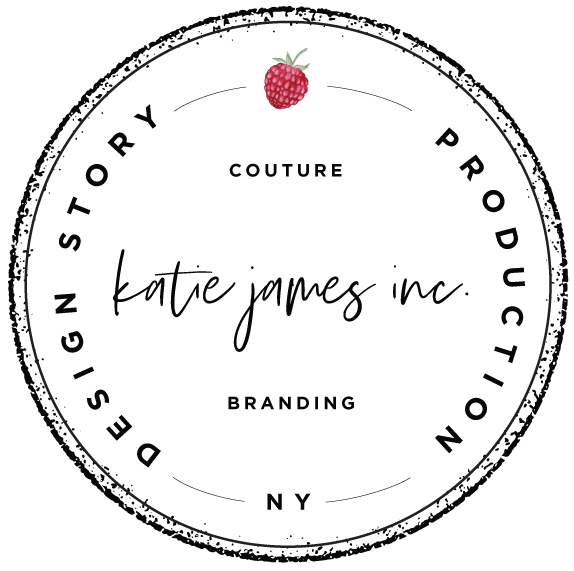Inside The Hidden Meaning Of The Runway Designs Of the 2023 Marist Fashion Show
/Editor’s Note: A Little Beacon Blog sent our cultural reporter Izdihar Dabashi to the annual Marist Fashion Show in May 2023. This year's was especially enticing because the theme was activism and speaking through message. Izzy reports from a higher gaze. This is what she saw and felt.
By Izdihar Dabashi
On May 5th, 2023, Marist College presented their largest annual event, the Silver Needle Runway. Juan-Manuel Olivera-Silvera, a remarkable designer with a diversified skill set and range in the arts, served as faculty producer of the show. I had seen a few promos leading up to the event, to feel the theme, which had a general sense of advocacy. Aptly titled: “[Re]action”, the logo design is black with spray painted shadowed grays and the harsh contrast of vivid maroon.
At first glance, it was easy to dismiss this aesthetic in the logo, which presented a sense of hopelessness and disengagement often associated with grunge, but this was incongruent with the efforts of genuine engagement of advocacy centered in the theme. The typical surface level take of grunge aesthetic, with that dark and broody look, was actually far from the theme's message and reflection of fashion designs.
Despite this observation, I still approached the night with a faint sense of skepticism. While I often dismiss cynicism as cheap and unremarkable, even my romanticism of the hum of continuous metamorphism grounded in universities was dissuaded by my experiences of witnessing alleged social advocacy from my perspective as a hijabi.
I couldn’t deny the unmistakable thrum in the air, interwoven with the pulse of the music and buzz of the crowd in Marist’s Mccann Center. The sense of compassion and community was apparent even before the show began.
Designs By: Emkay Kanu
Photo Credit: Izdihar Dabashi
Concepts Appearing Throughout The Show
The show was introduced with faculty members John Bartlett, known as a fashion designer and animal activist with work featured across massive publications, and Jacqueline Reich, the Dean of the School of Communication and the Arts. The faculty members proudly spoke about the recently awarded Ralph Lauren Scholarship, the emphasis of activism and leadership embraced by Marist designers, and the concepts interwoven throughout the show, which included:
childhood nostalgia
body positivity
cultural dynamics
self-care
living with disability
gender identity
environmental concern and engagement
current issues such as women’s rights and gun control
gender identity and fluidity.
The Fashion Show
Silence fell across the room as the lights collapsed and the show opened with a few students appearing to vandalize the runway entrance with spray paint cans.
Within moments of the models gracing the runway, I clearly saw the efforts to bring inclusivity to fashion. Model castings were held in New York City, and the diversity of the city was reflected in the selection of models. At this point, my initial inhibitions quieted. The entire runway experience felt like dynamic storytelling, from the way the fabric interacted with the wearer, to the details the clothing carried in silhouette and distinguished style. It was as though the designers sought out the voices they wanted amplified, and created tangible stories rooted in the history of the issue and the history of the fabric.
Spotlight On Designers
In Annie Starn’s collection, “Breaking Down the Walls” inspired by the political and physical divide of 1960s Berlin and its relevance to the political divide on women’s rights, she used sustainably sourced fabrics such as grape leather and QR codes linked to websites and organizations centered around women’s rights.
Tara Sears and Rachel Kamppila focused on disability advocacy. Tara Sears worked closely with blind or visually impaired people to create “Sense”, a collection that is meant to be a touch, sound, and sensory experience.
Rachel Kamppila crafted her collection around the metaphorical experience of the butterfly life cycle to her own experiences and growth as someone with a learning disability.
Designed By: Rachel Kamppila
Photo Credit: Izdihar Dabashi
Some designers focused on heritage, such as Simran Chhabra’s collection inspired by the storytelling of classical Indian dances and ghungroos, which are little bells woven into the clothing eliciting pretty chimes with every movement of the model.
Designs By: Simran Chhabra
Photo Credit: Izdihar Dabashi
“Justice Para la Cultura,” by Isa Perez, paid homage to their Mexican heritage through use of deadstock fabric and denim with hand-stitched embroidery. The breathtaking collection also challenged expected gender identity and highlighted Adelita women who fought in the Mexican Revolution.
Designed By: Isa Perez
Photo Credit: Izdihar Dabashi
Several designers honored women in their work and navigated expected masculinity and femininity with clever intricacies. Chaiyah Chambers leaned into femininity while uplifting body positivity and incorporating the inspiration of various hair textures dyed to match various hues of natural pearls in the textiles she created.
Design by: Chaiyah Chambers
Photo Credit: Izdihar Dabashi
Design by: Chaiyah Chambers
Photo Credit: Izdihar Dabashi
Design By: Chaiyah Chambers
Photo Credit: Izdihar Dabashi
Most collections featured different sized models, though one of my favorite collections from designer Lily Muth’s: “From Her Boots to Her Roots” (the style felt like a Barbie cowgirl dreamland) features the innovative use of natural dyeing techniques and collected fabrics. However, it notably neglected a range of sizes past runway small. It left me wondering why designers may promote the idea of inclusive representation without actually including inclusive representation with sizes.
Designs By: Lily Muth
Photo Credit: Izdihar Dabashi
This brought to question: Were there not enough models? Is it difficult to assemble the technicalities in clothing past a “standard” small? What are reasons for not making clothing past a size small?
Shannon Wines’ collection “Eve '' was a character study on Eve from the book of Genesis in the Bible with designs meant to evoke a feeling of exposure and vulnerability as a way to focus on the feelings of shame women often feel with exposure. Her work featured a variety of bodies. The way the fabrics and greenery of her designs embraced the models felt endearing and empowering, like the moment you slip on your favorite dress and just know the designer adores women.
A couple of designers traced back tiny footsteps into the nostalgia and experience of childhood. While some designers crafted wonderful whimsical and significant pieces (that I desperately wish I owned), such as the melodic blend of ruffles and color by Sandy Chillogallo-Quito, and LindseyAnn Moschetta’s nostalgic capture of being a child through her work with children at the Fashion Art Studio of Westchester, to design prints and textiles; others approached the preservation of innocence and value of childhood from a different perspective.
Design By: Allissa Divak
Photo Credit: Izdihar Dabashi
Allissa Divak starkly juxtaposed the whimsical carefree nature of the other childhood inspired collections with a sharp contrast of experience by designing bulletproof, fireproof, and stab-proof clothing for her “On the Other Side of Fear '' collection, in response to the growing number of school shootings.
There were 35 total designers. I highly suggest you take a look at every artists’ highlights available on the Marist SNR site and TikTok page. The designers’ created noteworthy, conceptual frameworks to their designs, and I wish I could include every single one in this review. Truly, the worst part of the show was being unable to take home my favorite pieces.
Senior Designer Of The Year Award
The Senior Designer of the Year Award was selected by a panel of judges composed of industry professionals to critique the Designer Senior Thesis Presentation. Marist alum and designer Emma Gage, joined the panel. Aleena Brown was awarded “Building Blocks”, a sustainable collection of breathable active-wear and convertible garments.
I applaud the designers and faculty involved for the sense of community they crafted and the emphasis on human compassion interwoven with design. I am also astounded by the level of professionalism and collaboration of the five SNR teams: Communication, Creative, Branding, Production, & Logistics. Follow their Instagram and TikTok pages to learn more about the program, behind the scenes content, which includes your opportunity to witness the lively rapport between faculty/students and direct conversations with the student designers on the cognition poured into their work.

